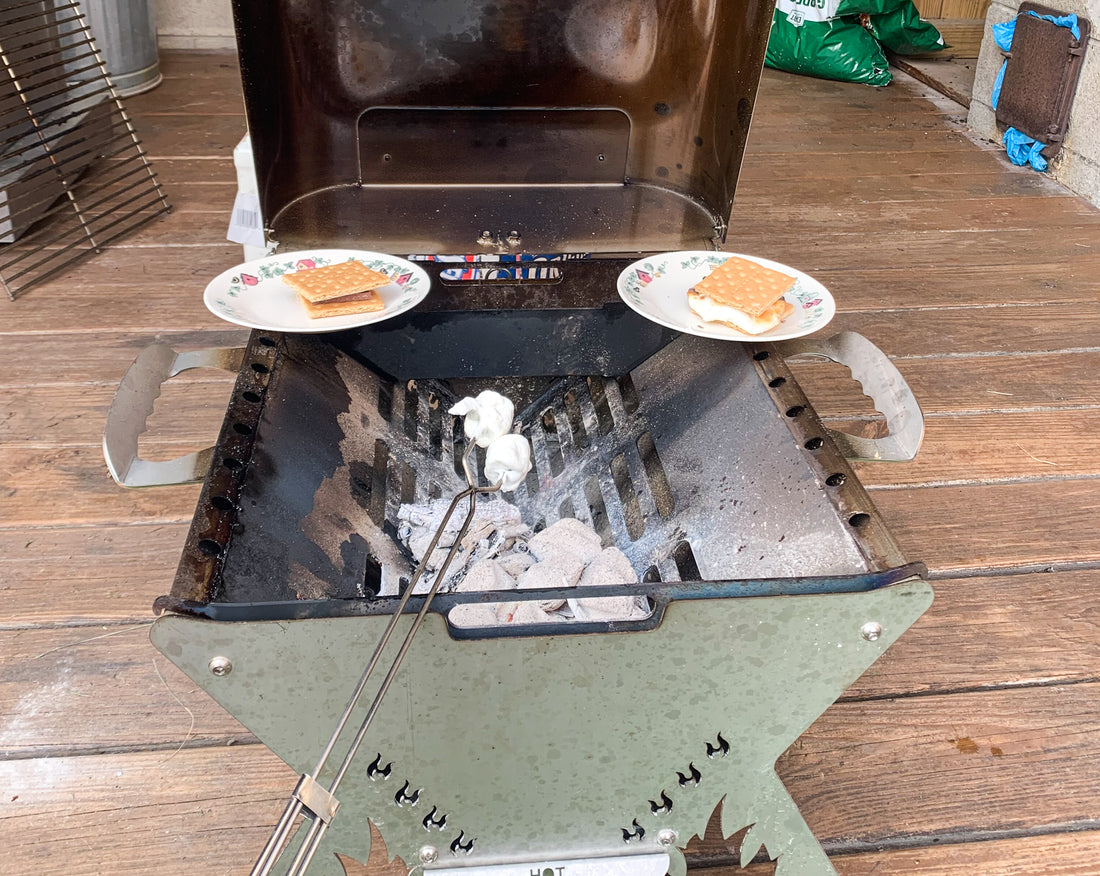The most mobile in our Smokin' Ugly family of products, the TG Series Portable Grill is finding its way into all the places where a barbecue can happen.
And as more grill enthusiasts are discovering the TG, we're starting to field some questions about the grill and using it.
We couldn't be happier to answer them — we love making sure TG users are getting the most from their portable grill.
To that end, we've compiled the top questions (and their answers) about the TG.
4 Things to Know About the TG Series GrillReleased in 2022, the TG Series Grill is the newest member of the Smokin' Ugly family. Designed to make grilling happen anywhere, the TG is:
|
7 TG Series FAQs
So let's get to it. Here are the most common questions we're fielding on the TG Series Portable Grill:
- What charcoal should I use?
[How to]:
- Light a TG Portable Grill
- Improving airflow
- Cooking on a TG Portable Grill
- Put out charcoal on your TG grill
- Cleaning a TG Portable Grill
-
Storing your TG when not in use
1. What Charcoal Should I Use?
That depends on what you're doing.
One of the things we're most proud of with the TG is its versatility. In addition to filling the role of a small portable grill, the TG is easily adapted to serve other outdoor cooking purposes. With a few quick adjustments, the TG goes from grill to griddle and pizza oven.
In most cases, we recommend using lump charcoal with your TG. Lasting about 2-3 hours and able to impart flavor, lump charcoal allows you to dial in your desired temperature quickly and accurately. For grilling — be it at a tailgate party or a run-of-the-mill dinner — lump charcoal works well as it gets hotter faster, but cooler quicker.
However, when you need to cook something at a higher temperature — say a pizza — or for longer periods of time (4-5 hours) charcoal briquettes are the way to go.
2. [How to] Light a TG Portable Charcoal Grill
Regardless of the type of charcoal you're using, the process we recommend for igniting your charcoal is the same.
Load your charcoal into a chimney starter, ignite a firestarter (crumpled newspaper works great) underneath, and let the fire spread and charcoal start to smolder.
Once the charcoal has ashed over (which would take 15-20 minutes), put it in your TG and get cooking.
A heat gun can be used as an alternative to using actual fire to get your charcoal going.
The #1 thing we'd absolutely NOT recommend is using lighter fluid. While lighter fluid is indeed a way to get your coals going quickly, it does impart a flavor that's not always welcome — one that tastes as good as it smells and can completely ruin a cooked meat.
3. [How to] Improving Airflow
As one of the main ingredients for creating a bed of coals, getting the right amount of air to your heat source takes a bit of fine-tuning as you cook.
While the TG doesn't have air vents as some other portable grills do, it does have two other means for controlling airflow:
- Moving the ash pan — It can be pulled out to create a bottom vent of sorts
-
Positioning the lid — (We'll get into this more in the next section) With its spring assist hinge, the TG's lid can serve as not only a covering but also a means to let more air in or out
4. [How to] Cooking on a TG Portable Charcoal Grill
It's no different than using another portable charcoal grill — or really any grill for that matter. Once the grill is up to the desired temperature, get cooking!
However, the TG does have one big advantage over other grills: its lid. Or more specifically, the spring-assist hinge affixed to it.
This hinge type brings motion control technology to the grill. No matter how far you open the TG’s lid, it stays in whatever position it’s set.
With this level of motion control, you end up with a higher level of control over what you're cooking. By being able to set the lid at a specific position, you're able to better vent or trap heat, allowing you to get temperatures exactly where you want them.
As an added bonus, you'll never need to worry about the TG's lid slamming down while you're grilling.
5. [How to] Put Out Charcoal in Your TG Grill
The best way to extinguish your charcoal is by doing nothing. Or another way: give your charcoal the benefit of time. Eventually, your charcoal will burn out on its own.
Like with igniting your charcoal, we urge you to keep fluid (water) out of the equation of putting out your grill's heat source. While it's tempting to douse your bed of coals with water and be done with it, that's one of the worst things you can do.
Why? A few reasons:
- It creates a steam cloud that can cause burns if you're standing too close
- It causes a sudden temperature change that might damage your grill — the rapid cooling can warp or crack the grill’s metal
-
It turns your ashes into a paste, which is messy and harder to clean up
6. [How to] Cleaning a TG Portable Grill
This one is pretty simple, but it's easy to not get entirely right.
Like other portable grills — or any grill for that matter — cleaning the TG goes beyond just clearing the grill grate of stuck-on food or debris. Keeping your TG looking good as new takes a bit more effort.
Unlike many other portable grills, TG is mostly constructed with a robust stainless steel. This makes giving the grill a solid once-over after use easier. With some steel wool, dish soap (we recommend Dawn), and elbow grease, the remnants of your last grilling session should disappear, leaving the TG ready to make fresh cooking memories on.
And don't forget about your spent charcoal and its ash — be sure to clean it out after it's no longer hot. Leaving either in your TG can cause damage to the grill, as the alkaline minerals in ash are corrosive.
7. [How to] Storing Your TG When Not in Use
Another one where the TG isn't any different than any other type of grill.
After you're done using your TG, cover the grill or move it out of the elements.
BONUS: [How to] Using the TG as a Pizza Oven
Swapping out the grill grate for a griddle, the TG easily goes from grill to pizza oven.
Making the perfect wood-fired pizza in the TG is a bit of an artform and does have a learning curve.
Part of finding your groove when making pizza in a TG is figuring out your heat source — everything from the type of fuel used to temperatures and placement.
There's no one simple answer to this question. What we can offer are a few tips.
- Get your bed of coals going first, then add your wood chunks
- Be cautious about the placement of your heat source; it does affect baking your pizza. Some like to have their bed of coals span the length of the TG, while others keep it in the back area of the grill for indirect heat
- Don't overfill your charcoal basket, being sure to leave a gap between the griddle and heat source
-
Make sure your wood chunks are dry — the last thing you want is any additional moisture in your pizza oven

Curious to Learn More About the TG?
Check out these resources:

